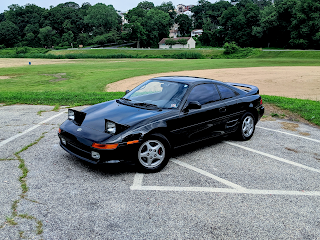Bookshelf Classic: Byte Magazine - Inside The IBM PC
While not a book, it is a classic. Published November 1983 with 720 pages, the magazine featured articles describing the innards of the IBM Personal Computer. The clever cover art shown here was created by Robert Tinney. Byte's Robert Tinney era spanned from the mid-70s to 1990, and his covers showed an uncommon thoughtfulness. Think vinyl record album sleeves of the day, where the artwork could have meanings on multiple levels.
Inside, you can find an interview with Philip Estridge, president of IBM's Entry Systems Division, and it included a discussion about keyboards. IBM was renowned for building high quality keyboards, and the unique tactile and audible feedback carried over to the keyboard for the IBM PC. But the atypical placement of the left shift key and the return key, along with the function keys being on the left instead of across the top, prompted Byte to remind Estridge that "some customers were upset." The layout didn't match the keyboards of prior IBM systems and typewriters.
Estridge admitted he wasn't thrilled with the placement of the keys, but there were reasons behind the moves. In part, the design was to have the character typing keys inside the control keys.
As for the function keys being moved to the left, doing so freed up space on the top for a book ledge, or in my case, a pencil ledge. I liked this arrangement, as it also better balanced the typing load between my left and right hands. "Fortunately, people adjust," Estridge noted.
Other articles were deeply technical, and included 8088 assembler code to manipulate screen resolution, a section on keyboard interrupts, and a look at installable device drivers for PC-DOS 2.0. There was also a comprehensive compilation of expansion boards -- memory, printer, communication, specialty -- totaling 100 (I counted them) vendors.
And then there were the ads... pages and pages of ads... from defunct names such as Hayes Modems, Quadram, Juki Printers, the Desmet C Compiler, to companies still running today such as 3M, Texas Instruments, and Panasonic.
Back in the day, I devoured the technical articles, happily typing in the assembler code on my fancy IBM PC keyboard (no downloads available yet), while only skimming the pieces on design and management. For this review, my behavior was flipped, as I found myself re-reading the design articles and just skimming the technical ones. Which goes to show, the technical stuff changes, but design problems endure.
You can read, or re-read, this magazine for free on the Internet Archive. Sometimes referred to as the "Wayback Machine," the site's maintainers are really modern archivists, keepers of the flame, Guardians of the Internet Galaxy. To learn more, see Ars Techica recent (October 2018) story about them: The Internet's Keeper's?
Inside, you can find an interview with Philip Estridge, president of IBM's Entry Systems Division, and it included a discussion about keyboards. IBM was renowned for building high quality keyboards, and the unique tactile and audible feedback carried over to the keyboard for the IBM PC. But the atypical placement of the left shift key and the return key, along with the function keys being on the left instead of across the top, prompted Byte to remind Estridge that "some customers were upset." The layout didn't match the keyboards of prior IBM systems and typewriters.
Estridge admitted he wasn't thrilled with the placement of the keys, but there were reasons behind the moves. In part, the design was to have the character typing keys inside the control keys.
As for the function keys being moved to the left, doing so freed up space on the top for a book ledge, or in my case, a pencil ledge. I liked this arrangement, as it also better balanced the typing load between my left and right hands. "Fortunately, people adjust," Estridge noted.
Other articles were deeply technical, and included 8088 assembler code to manipulate screen resolution, a section on keyboard interrupts, and a look at installable device drivers for PC-DOS 2.0. There was also a comprehensive compilation of expansion boards -- memory, printer, communication, specialty -- totaling 100 (I counted them) vendors.
And then there were the ads... pages and pages of ads... from defunct names such as Hayes Modems, Quadram, Juki Printers, the Desmet C Compiler, to companies still running today such as 3M, Texas Instruments, and Panasonic.
Back in the day, I devoured the technical articles, happily typing in the assembler code on my fancy IBM PC keyboard (no downloads available yet), while only skimming the pieces on design and management. For this review, my behavior was flipped, as I found myself re-reading the design articles and just skimming the technical ones. Which goes to show, the technical stuff changes, but design problems endure.
You can read, or re-read, this magazine for free on the Internet Archive. Sometimes referred to as the "Wayback Machine," the site's maintainers are really modern archivists, keepers of the flame, Guardians of the Internet Galaxy. To learn more, see Ars Techica recent (October 2018) story about them: The Internet's Keeper's?





Comments